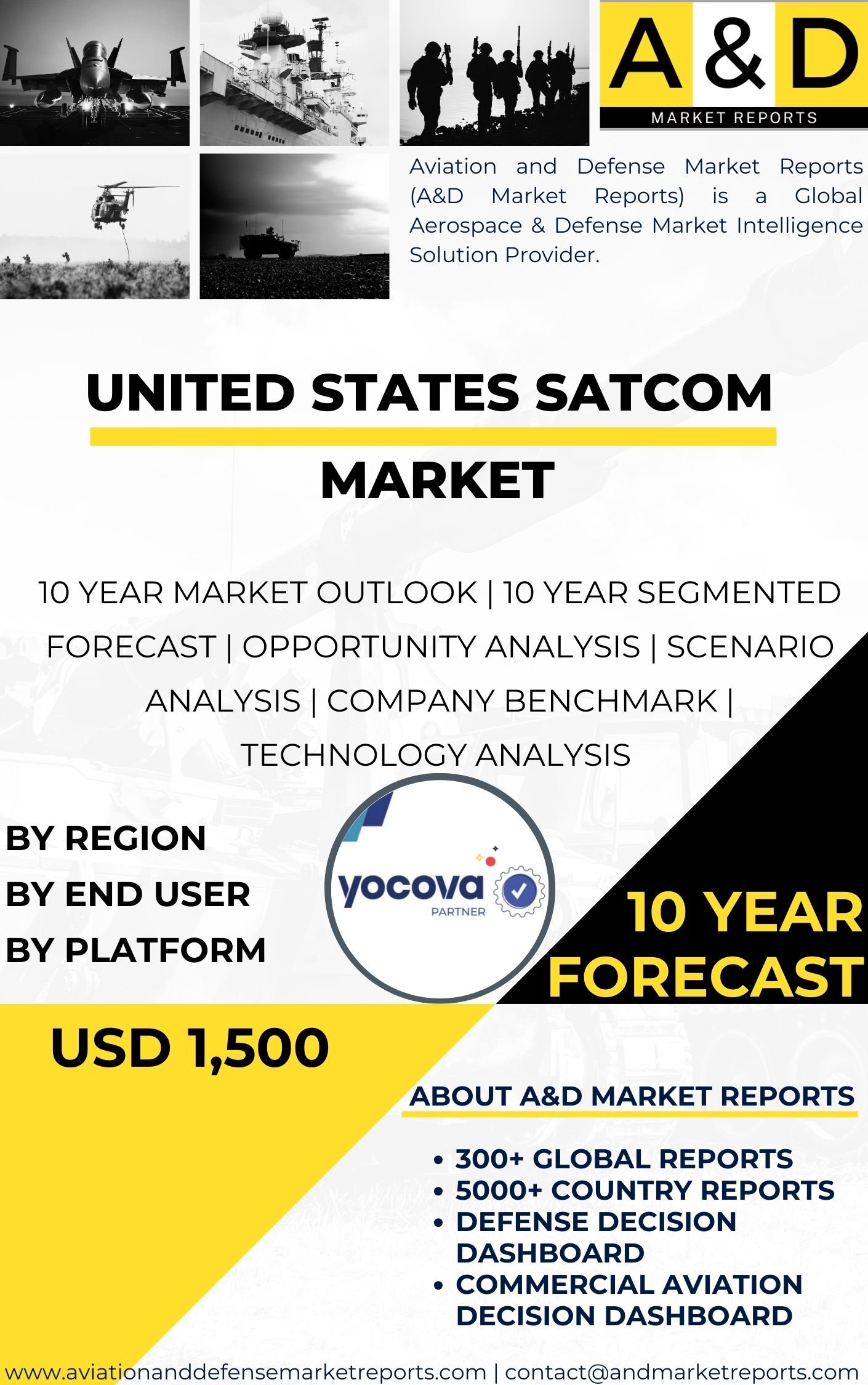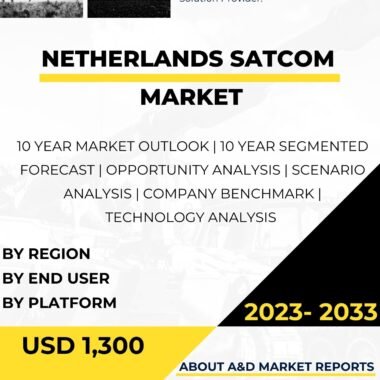Description
The United States SATCOM (Satellite Communications) market plays a critical role in enabling global connectivity, communication, and information sharing for various sectors, including defense, government, commercial, and civil applications. SATCOM involves the use of satellites to transmit and receive voice, data, and video communications, providing reliable and secure communication capabilities even in remote and challenging environments.
In the United States, SATCOM has become an essential component of national security and defense. The Department of Defense (DoD) heavily relies on SATCOM for command and control, intelligence, surveillance, and reconnaissance (ISR), and to support military operations worldwide. SATCOM systems provide real-time data and situational awareness to military commanders, enabling them to make informed decisions and respond rapidly to emerging threats.
Military SATCOM encompasses a range of capabilities, including Wideband Global SATCOM (WGS) and Advanced Extremely High Frequency (AEHF) satellites. WGS satellites provide high-capacity communication to U.S. and allied forces, while AEHF satellites offer secure and protected communications for strategic and tactical military operations.
To enhance military SATCOM capabilities, the United States is investing in next-generation systems, such as the Space Enterprise Vision (SEV), which aims to integrate commercial and government SATCOM capabilities into a seamless network. The SEV seeks to improve resilience, flexibility, and interoperability while reducing the military’s reliance on traditional satellite constellations.
Beyond defense, SATCOM has widespread commercial applications in the United States, driving connectivity for businesses, maritime, aviation, and remote areas where terrestrial communication infrastructure is limited. Telecommunications companies use SATCOM to provide broadband internet services, expanding access to high-speed connectivity across the country.
Additionally, the aviation industry relies on SATCOM to enable in-flight connectivity, enhancing passenger experience and providing real-time data to improve flight operations. SATCOM-equipped aircraft can access weather updates, maintenance information, and flight plans while staying connected to ground-based networks.
In the maritime sector, SATCOM enables efficient communication and navigation for ships and vessels worldwide. Merchant ships utilize SATCOM for vessel tracking, weather updates, and crew welfare communications, while the U.S. Navy employs SATCOM for secure and reliable ship-to-ship and ship-to-shore communications.
Furthermore, SATCOM plays a vital role in disaster response and emergency communications. When terrestrial infrastructure is damaged or overwhelmed during natural disasters, SATCOM can quickly establish essential communication links for first responders and humanitarian aid organizations.
The United States Government, including federal, state, and local agencies, relies on SATCOM to support its operations and critical services. Agencies use SATCOM for emergency response coordination, remote monitoring, and data transmission, enhancing disaster preparedness and recovery efforts.
In the civil space sector, SATCOM enables space-based research and exploration, satellite imagery, weather forecasting, and global positioning system (GPS) services. The National Aeronautics and Space Administration (NASA) utilizes SATCOM to communicate with spacecraft, collect scientific data, and monitor missions to other celestial bodies.
As SATCOM services continue to evolve, the United States is investing in advanced technologies to address emerging challenges and meet growing demand. The development of low-Earth orbit (LEO) and medium-Earth orbit (MEO) satellite constellations, such as SpaceX’s Starlink and OneWeb, promises to provide high-speed, low-latency internet connectivity to underserved and remote areas.
However, the proliferation of satellite constellations raises concerns about space debris and potential interference with astronomical observations. The United States is actively working with international partners to address these challenges and establish guidelines for responsible satellite operations.
The commercial SATCOM market in the United States is highly competitive, with multiple satellite operators and service providers offering a wide range of solutions to meet diverse customer needs. Companies like Intelsat, SES, Inmarsat, and Viasat are prominent players in the industry, offering global coverage and innovative services.
The United States also collaborates with international partners on SATCOM initiatives to enhance global coverage and interoperability. The Wideband Global SATCOM system, for instance, is a joint effort with allied nations to share satellite resources and improve communications for coalition operations.
As the demand for SATCOM services continues to grow, there is a focus on improving satellite capabilities, reducing launch costs, and developing advanced ground infrastructure. Ground-based terminals and user equipment are essential components of the SATCOM ecosystem, and advancements in antenna technology and miniaturization are driving innovation in this area.
Furthermore, the adoption of Software Defined Radios (SDRs) allows for more flexibility and adaptability in SATCOM systems, enabling users to access multiple frequency bands and adjust to changing communication needs.
To protect SATCOM assets and operations, the United States is actively pursuing measures to defend against space-based threats, such as anti-satellite weapons and jamming. Space Situational Awareness (SSA) capabilities and space surveillance networks help monitor space objects and detect potential hazards to satellite constellations.
In conclusion, the United States SATCOM market is a dynamic and critical component of national security, defense, and commercial communications. SATCOM technologies enable reliable and secure connectivity across various sectors, supporting military operations, commercial activities, disaster response, and space exploration.
As the demand for connectivity continues to grow, the United States is investing in advanced SATCOM capabilities, collaborating with international partners, and addressing challenges to ensure the resilience and effectiveness of SATCOM services for the nation’s present and future needs. The United States’ ongoing commitment to advancing SATCOM technology and infrastructure underscores its significance as an essential enabler for communication, data transmission, and global connectivity.




